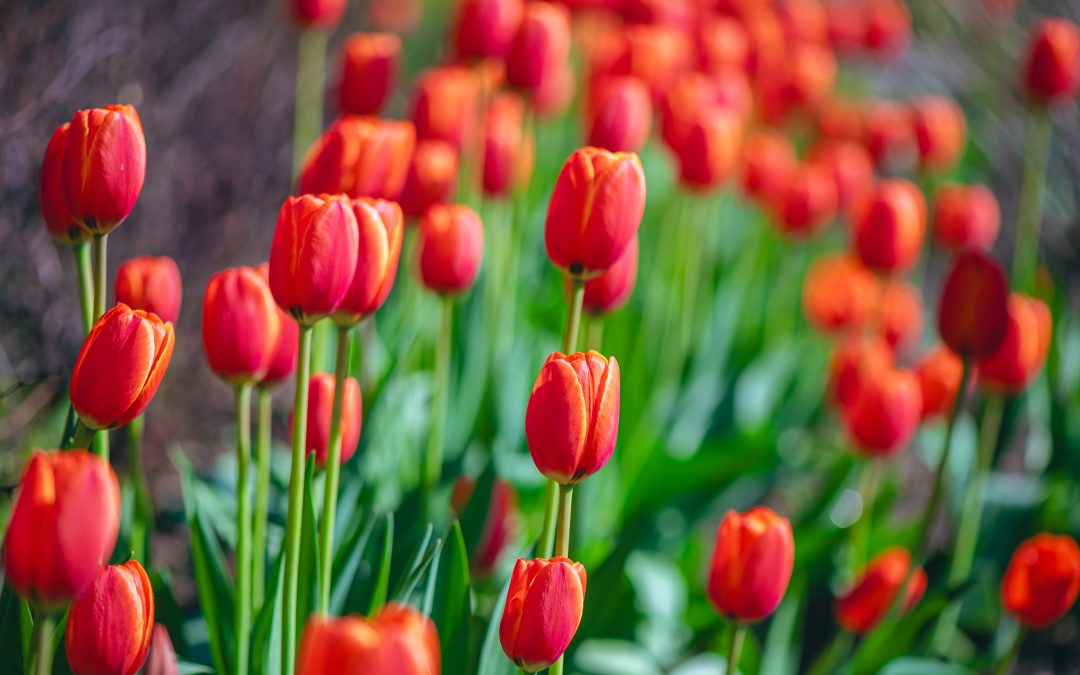We have attempted to answer all your bulb questions here. If you have additional bulb questions, please use the ‘Ask a Master Gardener form‘ to submit your question.
Spring Bulbs
October – The best time to purchase tulip and narcissus bulbs and start them chilling
Spring bloomers, such as tulips and narcissus, require a chilling period of 12 to 16 weeks. The highest chilling temperature is around 40 degrees F. (4 C.), so chilling bulbs in the refrigerator is ideal. Just be sure not to store them near any fruit, as the released ethylene gas reduces bloom. Some like to use the small ‘dorm room’ refrigerators just for their bulbs. Daffodils do not require chilling.
Some have had excellent results planting spring bulbs in the fall. Late September into December. Letting nature chill the bulbs.
When and where to plant: Daffodils can be purchased usually in late September or October. As soon as the temperature is a consistently cooler, bulbs can be planted. Other bulbs will be planted in later February into early March.
Plant bulbs in area of full sun, at least 6 hours daily. Filtered sun is acceptable. The more sun the better. Bulbs do need a well drained soil. Flowers beds that stay wet increase the odds of a fungus or rot in the bulbs.
Soil
Bulbs will do well in about any well drained soil. Yes, amendments, such as, compost, blood meal, and expanded shale in heavy clay will add to the success of your bulbs.
Depth of planting
Recommend 3 times the height of the bulb. Then mulch approximately 2 inches.
SpacingBulbs do need a little room to grow. The recommendation is at least 2 times the width of the bulb. Some gardeners will plant bulbs very tight to achieve the effect of a solid colored bed. For most practical use, 2-3 times the bulb width.
Removing the left over leaves or fans.As the bulbs leaves or fans start to fade, usually after the flower has died, they can become unsightly. If you can allow the foliage to remain on the bulb as long as possible. The dying foliage is sending needed nutrients to the bulbs. These nutrients will be stored for future flowering.
Digging up bulbs
In Parker County, most gardeners do not attempt to hold over their bulbs to the next season. Most do not believe it is worth the time and energy. There are some bulbs that gardeners do like to try to carry over. Those are tulips, elephant ears, and some caladium, that can be dug up and stored at the end of their season. With these bulbs leave the dirt on the bulb and place in a container with peat moss and chill. Heirloom bulbs listed below, do not need to be dug up as they will remain dormant until the following spring.
Examples of Heirloom Spring Bulbs / Most will come back for several years if allow to capture nutrients from spent foliage.
- Daffodils/Narcissi: Precocious, Narcissi Cheerfulness, Tete-a-Tete, Golden Bells, Cassata
- Hyacinthoids: Spanish Bluebells
- Grape Hyacinths/Muscari: Muscari Armeniacum
- Leucojum aestivum (“Snowflake”)
- Dutch Iris: Blue Magic
- Ipheion uniflorum Rolf Fielder, Leucojum Aestivum Gravetye Giant, Allium cowani

